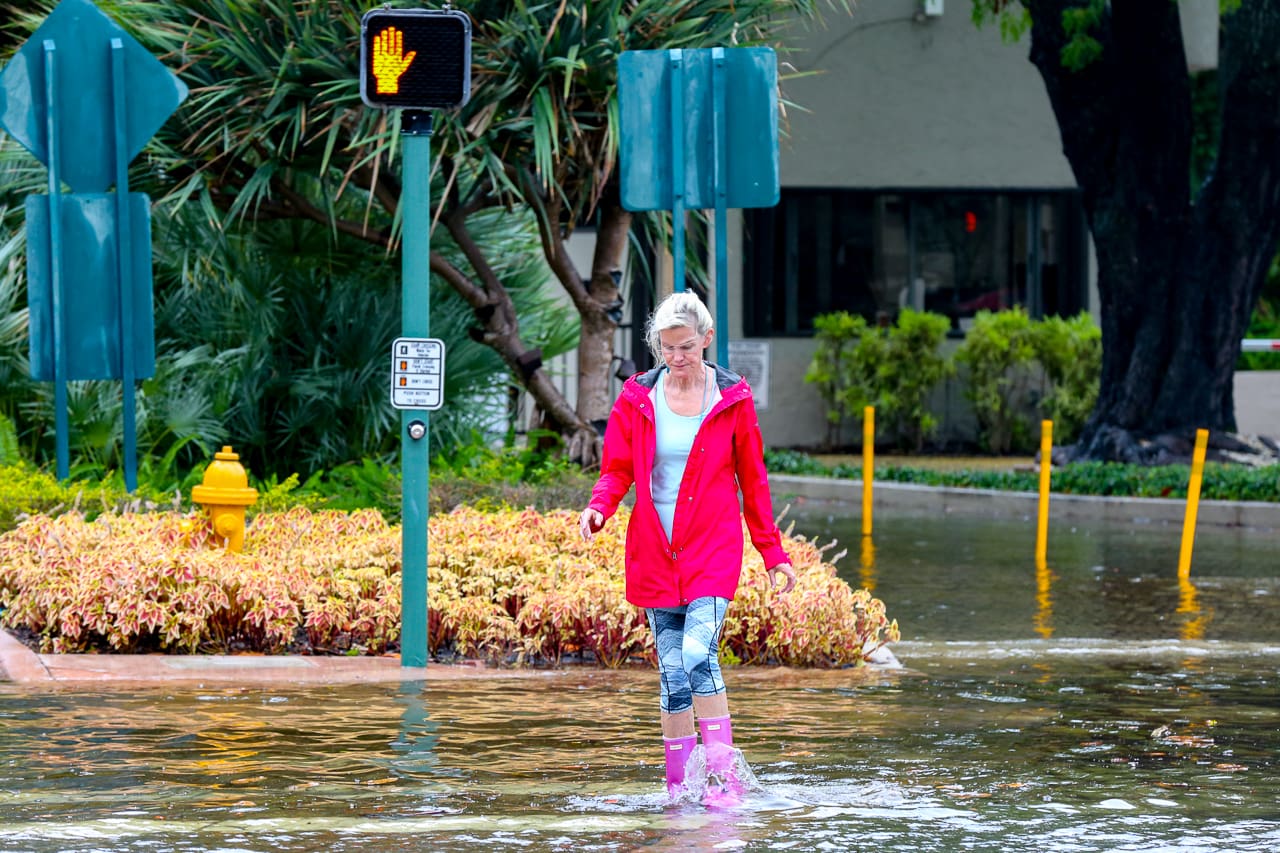The price tag to counter sea level rise grew to $310 million this past week as engineers presented a complex set of options aimed at keeping storm waters off streets and out of people’s homes. The project would be the biggest public works initiative in Key Biscayne’s history.
The unanswered question: how much flooding will the Village Council tolerate? Will it stick with the flood water removal targets it unanimously set more than a year ago, or will it alter course and accept more ponding and slower water removal to save money?
The new engineering estimate was for the costliest part of the initiative: installing miles of new pressurized drainage lines and raising roads six inches. The project is the heart of Manager Steve Williamson’s resilience initiative.
Other parts of the initiative — burying electrical lines and protecting the coastline — were not addressed at the meeting, but are expected to add at least $20-40 million to whatever storm water cost is set, officials have said.
An April, 2022 estimate for all parts of the initiative was put at $250 million by the Village.
No decisions were made – but the three-hour long discussion underscored the complexity of updating the island’s antiquated gravity-based drainage system. AECOM, the engineering firm leading the design, said the barrier island’s drains now remove only 28% of the water they should be clearing.
“It’s only going to get worse,” said Chief Resilience Officer Roland Samimy. “Inaction is absolutely not an option.”
The $310 million estimate was one of a package of four alternatives ranging from $170 million to $430 million, including a 35% overrun contingency. They were presented by Thomas McGowan, an AECOM senior project manager, who also outlined options for “Zone 1,” the area around the often flooded area near the K-8 public school.
McGowan said all of the village wide alternatives would require at least 17 pumping stations to move an increasing amount of water. The pumps themselves would be underground, in vaults that would allow additional units to be installed as work progresses.
Planners must also consider many practical and regulatory limitations, especially when building new outfalls, which function like an exit door for storm water.

The recommended approach will need “energy dissipators’ – a kind of baffle – to make sure the millions of gallons of storm water being pumped off the island flows at a reduced velocity to prevent fragile sea beds or grasses from being ripped up by an overly-forceful current.
Another concern is pollution. Filters are planned to remove both physical debris and chemical pollutants like nitrogen that are blamed for sickening Biscayne Bay.
“This would be a major water quality improvement to the Bay,” McGowan said, noting the Village currently doesn’t do any filtering of water that drains to the Bay.
But the meeting also revealed that for Council members, the decision is not a simple one..
The issue of raising roads — six inches to start — drew sharp questioning from Council Member Brett Moss, who asked if that would lead to water getting into people’s homes.
McGowan replied that the plan to raise streets — to be done in steps — is a core part of the program and that engineers are including enough capacity to remove any amount that would come from higher streets.
Moss remained skeptical, raising a hurricane scenario. “If the pumps are out,” he asked, “that displacement would trigger destruction from floods.”
Samimy responded that a hurricane’s surge would overwhelm any drainage system built to handle rainfall and rising seas. “You’re going to be seeing three, four, five feet of water across the entire island, irrespective of six inches of road raising or not.”
The meeting did not delve into financing options, but much of the storm water system work would involve borrowing from a low-interest state revolving fund, paid back via storm water fees. The Village will also borrow money under an obligation bond, but Williamson couldn’t provide specifics because the Council has yet to give direction on the level of service it wants.
“It’s hard to get concrete numbers when we don’t know exactly what we’re designing to,” Williamson said Monday. “The good news is that Alternate 4 gives us the greatest flexibility in executing the full program.”
A major concern with Alternative 4 is that it depends on the Village negotiating an easement with a property owner, the cost of which is unknown — although officials said initial discussions had been positive.
Williamson said he will be asking the Council to confirm or alter the water removal targets in a follow-up meeting.
Council Member Allison McCormick, about 90 minutes into the meeting, went back to the 2022 session when the performance targets were set, noting they were based on surveys and community input.
“I certainly don’t want to overdesign and overpay,” she said, but added: “I also worry sometimes about being pennywise and pound foolish.”
Invest in Local News for Your Town. Your Gift is tax-deductible
Tony Winton is the editor-in-chief of the Key Biscayne Independent and president of Miami Fourth Estate, Inc. He worked previously at The Associated Press for three decades winning multiple Edward R. Murrow awards. He was president of the News Media Guild, a journalism union, for 10 years. Born in Chicago, he is a graduate of Columbia University. His interests are photography and technology, sailing, cooking, and science fiction.



